Project light tank UDES 19 (Sweden)
In 1974, the companies Bofors and Hägglunds commissioned the FMV Material Management Department to develop the joint project UDES 15 / 16. This project proposed the construction of a tracked combat vehicle with medium-thickness armoring and an 105 or 120 caliber mm. the main thing weapon The tank was located in the turret and was equipped with automatic loader. The project was brought to the construction of a running model and a full-size wooden model, after which the work was stopped. After examining the collected data and analyzing the experience, the authors of the project decided to abandon the further development of the existing development in favor of new works of a similar purpose.
It was previously established that the monitors' layout of the turret with the placement of the gun and the automatic loader in a separate armored unit was of some interest. The result of such interest from the military was the emergence of several new projects. Thus, in the framework of the UDES 17 project, it was proposed to equip a tracked chassis with a launcher gun mount, which is a further development of the Strv 103 serial tank. In the stowed position, the gun could be lowered onto the body, and before the battle it should be raised, which made it possible to have full-fledged vertical guidance within the wide sector.
The retractable turret with a gun solved some problems, but it was still too difficult to manufacture and operate. For this reason, the UDES 18 project was created, in which the turret assembly with the crew’s position inside the hull could not retract into the hull. The gun was equipped with automatic loader with the supply of shells from a replaceable feed box. An arrow was provided on the body to supply a spare box with additional ammunition. However, this project did not leave the stage of preliminary study. At the same time, some ideas from this project were proposed to be used in new works.
The further development of the ideas of these two projects was to be the tank UDES 19. In its design it was planned to use the already proposed ideas. In addition, some new solutions could be applied. In the case of successful implementation of all the tasks set, the new light tank could receive a number of characteristic advantages over the existing foreign-made equipment. At the same time, however, the advantages over the domestic Strv 103 would not be so obvious and pronounced.
Like other projects of the UDES family (Underlagsgrupp Direkt Eld Stridsfordon - “Ground Fighting Machine, shooting direct fire”), the new tank under the number “19” was developed taking into account the initial requirements formed by FMV specialists several years ago. The tank was supposed to have a combat mass of about 25 tons, carry an 105 or 120 mm caliber gun, and also protect the crew from bullets and artillery shells of small-caliber artillery. The mobility had to be provided by the engine, giving specific power within 20-25 hp per ton. It should be noted that all projects of the UDES family were developed in accordance with such requirements, but their results differed significantly from each other. The situation with UDES 19 was similar. By its own peculiarities, it should have resembled the other technique of the program, while the other features led to serious differences.
One of the goals of the UDES 19 project was to reduce the size of the frontal projection in order to reduce the likelihood of detection and destruction on the battlefield. This requirement had a great influence on the shape of the body. The use of the turret tower, in turn, made it possible to more fully utilize the existing possibilities in the field of housing refinement.
The finished hull for the new tank had to have inclined upper sheets, forming a characteristic design. The largest and thickest sheet was in the front of the machine, and rectangular parts joined it from below. It was planned to manufacture low fencing niches with vertical sides of small height. From above, they were covered with sloping sections of the roof. The feed was similarly arranged. The horizontal section of the roof had a relatively small area and was intended for the installation of all necessary equipment.
Once again, it was proposed to use the layout of the hull with the front-mounted engine compartment. The center of the hull should have been given under a relatively large manned compartment with jobs for the entire crew. Behind the crew it was planned to place a volume for mechanized styling of ammunition and some elements of the automatic loader. Also, the ammunition could be placed outside the body in a special rendered box.
To provide the required mobility, the UDES 19 tank required an engine power of about 500-550 hp, with the help of a transmission, outputting torque to the front drive wheels. Considered two variants of the chassis, which had minimal differences. In one of them it was proposed to install five track rollers on each side, in the other - six. In all cases, an adjustable hydraulic suspension should have been used. In this case, the balancers of the two front pairs of rollers had to turn back, the rest - forward. It was assumed that to improve the combat qualities of technology, the undercarriage would be able to change the position of the hull and guns.
The greatest interest in the project UDES 19 was the design of the combat module. On the chase of the hull, the base plate of the monitors' tower should be located, slightly protruding above the roof. On this detail were placed two vertical posts with hinges for mounting the pivots of the rocking artillery unit. The latter received an armored body with a wedge-shaped frontal part, characterized by a large inclination of the upper sheet. Other elements of the body had a rectangular cross section. There was an embrasure in the frontal sheet for stem removal, in the bottom and in the lumpy sheet there were openings for interaction with automatic recharge. Aiming a weapon in a vertical plane was suggested using a pair of hydraulic cylinders.
The base variant of the advanced tank was to carry an 105-mm rifled gun. The gun with a barrel length 45 caliber had a muzzle brake of a characteristic square shape and was equipped with an automatic loader. According to some data, within the framework of the pilot project, it was decided to borrow such systems from the Strv 103 serial medium tank. The projectile could be fed to the cannon with the help of a rocking lever moving from stacking to the breech. The possibility of using systems of a different design was also not excluded. Shells should have been located in the stern of the hull or in the removed casing. Placing stacks in the stern niche of the combat module was not provided.
The entire crew of three people was to be placed in a single habitable compartment in the central part of the hull. Ahead was a control post with a driver's seat, equipped with its own hatch and viewing devices. The commander-gunner was supposed to be in the turret space and could move along with the rotation of the tower. To access the car, he also had to use his own hatches in the roof. Placement and type of sighting devices are unknown. Perhaps the tank could be equipped with periscope trailers and optical-electronic systems.
After the development of the project, the contracting companies received approval for the construction of experimental equipment and the conduct of its tests. In order to speed up and simplify these works, it was decided to abandon the assembly of a full-fledged prototype tank, to begin with by building a simplified running model. An additional way to accelerate the program was the use of a finished serial armored vehicle, which was planned to be used as the basis for an experienced tank. In the mid-seventies, Sweden acquired from Germany a significant number of Leopard 1 tanks and Marder infantry fighting vehicles. It was the new imported BMP that they decided to use in the new project as a test chassis for one of their prototypes.
It should be noted that the German armored vehicle could be a very successful experienced chassis. In the initial configuration, the Marder BMP had a combat mass of 28,5 T, as well as a body of a characteristic shape with an inclined frontal sheet of large dimensions and the upper parts of the sides heaped inside. The layout of the infantry fighting vehicle also corresponded to the plans of the UDES 19 project. Finally, it was equipped with an engine power 590 hp, which gave the power density indicators at the required level. As a result, after the regular turret was removed, the Marder armored vehicle could become a very convenient stand for developing ideas for a promising project.
During the rework, the imported vehicle lost the existing turret with a small-caliber automatic cannon and machine gun. In addition, some components and assemblies could be removed from the aft troop compartment, above all, no longer needed seats for soldiers. A mock-up of a combat module with an 105-mm cannon was installed on the existing shoulder strap. In view of the different design of the hull, the turret assembly of the monitor had a bearing part of a smaller diameter. At the same time, all other details corresponded to the initial design of the light tank.
As the available materials show, the initially prototype model of the gun mount consisted only of a mast, a cannon and some devices mounted next to the breech. Subsequently, the installation received a casing corresponding to the developed project. During the tests, the undercarriage model of the tank overcame the tracks with both open and protected guns. Probably, it was planned to check the survivability of the gun in various conditions, as well as the stability of the gun installation to various contaminants and interferences.
It is also known about the existence of a second experimental sample based on a serial armored vehicle. In this case, the turret assembly tower was mounted on the Strv 103 medium tank. With the machine being modified, the staff gun and all associated combat compartment devices were removed. Instead, the weapons on the hull roof, next to the crew hatches, installed a cylindrical support with a rotatable launcher launcher combat module. It was on this prototype that the automatic loader was tested with a swinging lever lifting the shells to the gun. The lever did not have the ability to turn around the axis of the tower, which is why, during reloading, it apparently could not “catch up” with the cannon turned in one direction or the other.
Tests of two experimental samples showed approximate characteristics of a promising tower of non-standard layout. Automatic loader and guidance devices worked reliably in different conditions and under the influence of various external factors. No precipitations did not interfere with the automatic loader and aiming drives. In addition, tower systems were also tested with more serious interference. To do this, right into the units of the combat module placed the branches of trees up to 5 thickness. Automation successfully broke, "chewed" and threw out the branches, continuing to work properly. Thus, in the presence or absence of the armor casing, the gun and its units could work without any significant problems, fully performing their functions.
In parallel with the tests of two machines equipped with models of the combat module, the authors of the UDES 19 project built a wooden model of a light tank. This product had a simplified design, but clearly demonstrated the general features of the perspective development. The model had a body with the upper parts of the forehead and sides tilted inward, and it was also equipped with a turret assembly layout with a casing for the breech. Instead of a full-fledged undercarriage, the mockup received a plywood box, on the sides of which the undercarriage elements were drawn: the drive and guide wheels, five support rollers and supporting rollers.
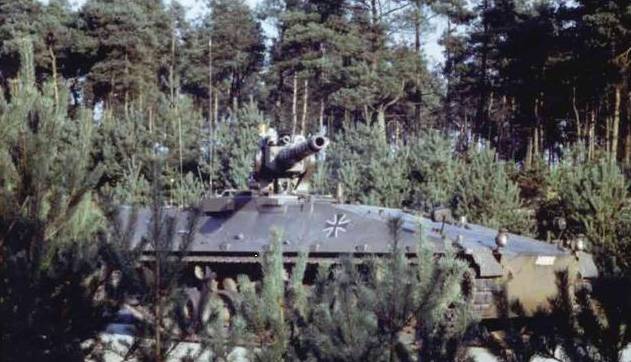
The tests of the experimental tower were carried out with or without an installed casing.
In its dimensions, the layout of the UDES 19 tank differed little from the serial Strv 103. The length slightly exceeded 6 m, width no less than 3,5 m, height no more than 2,2-2,4 m. It is noteworthy that when measuring the height of the hull roof the prospective tank was slightly lower than the serial one, and the difference in dimensions was due to the original turret. Thus, in terms of size and, possibly, mobility, the two samples were similar. At the same time, the newer UDES 19 tank had advantages in the form of a higher line of fire, full-fledged guidance tools and the possibility of using a larger-caliber gun without the need for serious processing of the hull and its internal devices.
Testing of two experimental samples, equipped with a tower of original design, allowed to determine the real possibilities and prospects of the main ideas used in the project UDES 19. The turret of the layout of the montage, which has a number of characteristic advantages, showed itself from a good side, which made it possible to continue the development of such ideas. However, the project №19 was not continued, it was soon closed.
The project of the light tank UDES 19 was the next development of its family, designed to test those or other new ideas. Employees of the Bofors and Hägglunds companies, in collaboration with the management of FMV, developed a full-fledged project of a light armored vehicle with a relatively high-powered weapon. Verification of the main ideas of the project was carried out with the help of two experimental machines on the basis of serial armored vehicles and one wooden model. The proposals of the designers were checked, after which the need for further work on the current project simply disappeared.
The constructed experimental machines were no longer needed by the authors of the project, which is why they were apparently rebuilt according to the initial projects and returned to normal operation. Wooden mockup went "for firewood." Now it was supposed to test prototypes built in the framework of other new projects that are directly related to the discontinued UDES 19.
Proven ideas in the near future were planned to be implemented in new projects of the UDES family. In these works it was also supposed to implement some other proposals. In particular, the customer made a complaint to the mobility and patency of the existing equipment. The existing and promising tracked armored vehicles were distinguished by high mobility in rough terrain, but still were not without flaws. In this regard, the project UDES XX 5 soon started. His goal was to create an armored vehicle with a carriage assembly tower, which differs from another vehicle of the family of radically improved maneuverability.
On the materials of the sites:
http://ointres.se/
https://ritastatusreport.live/
http://ritastatusreport.blogspot.ru/
http://tanks-encyclopedia.com/
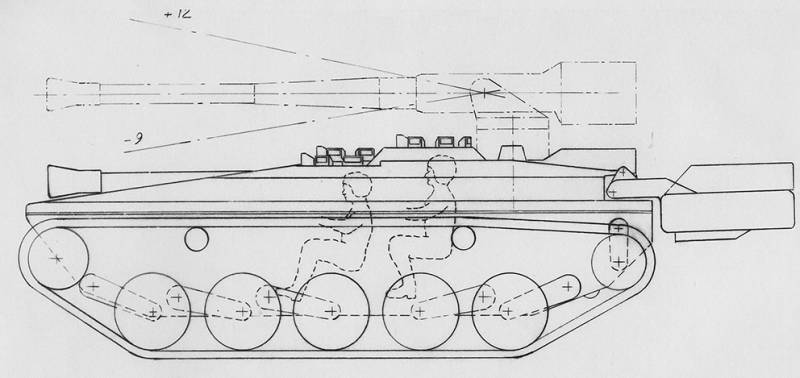
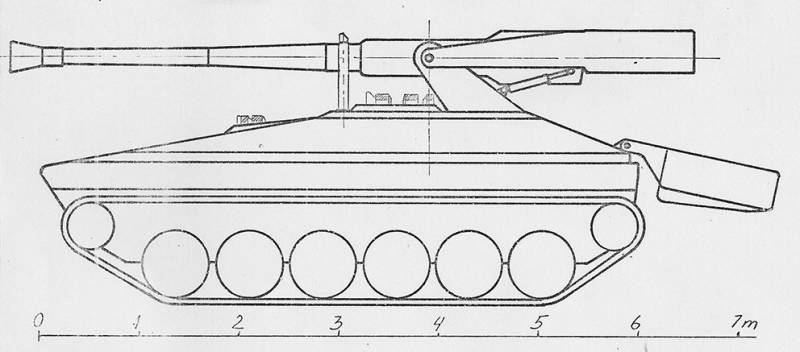
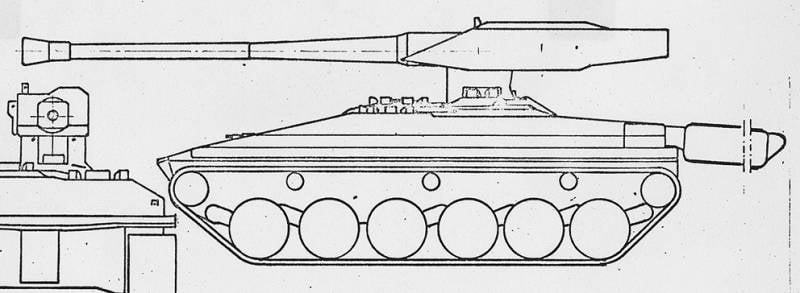
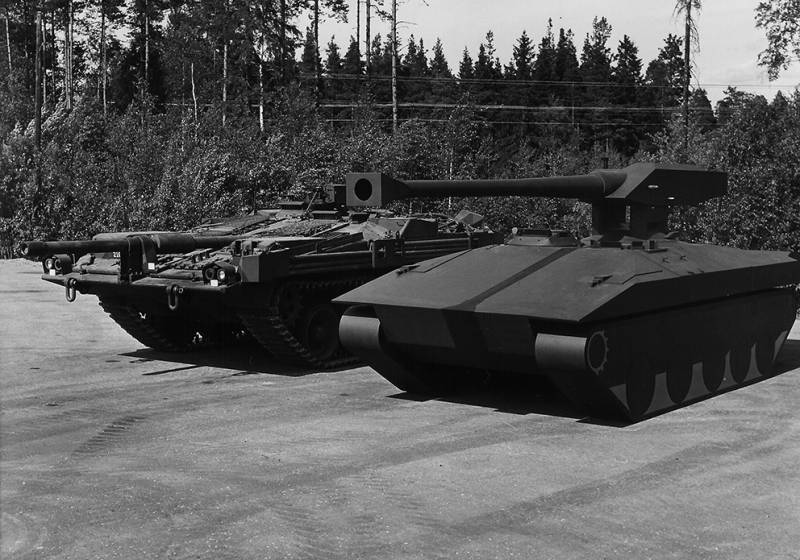
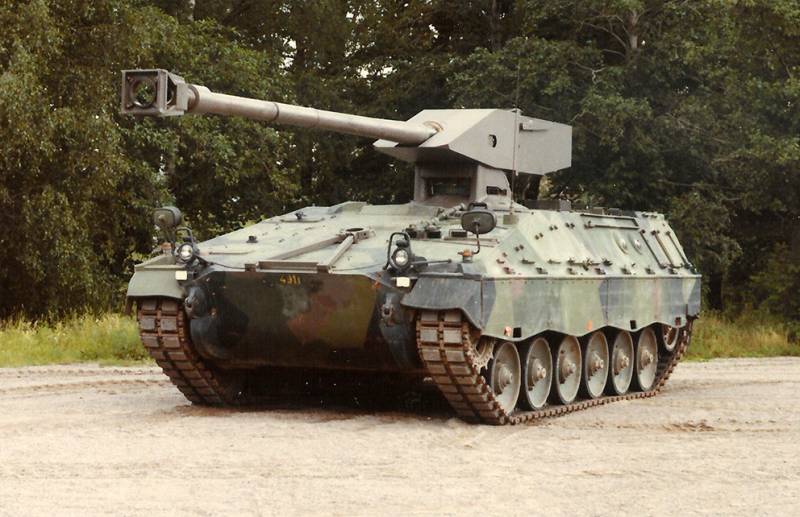
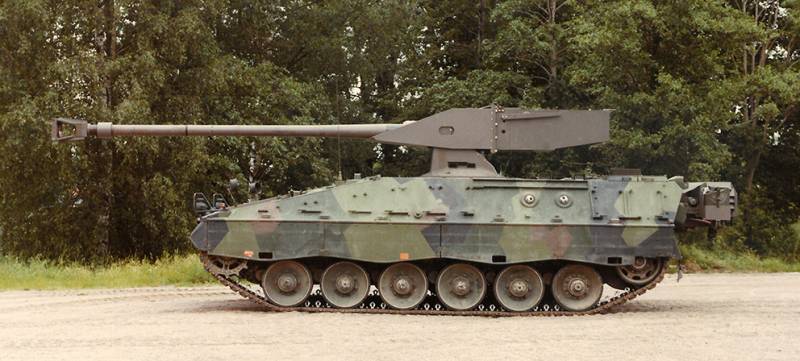
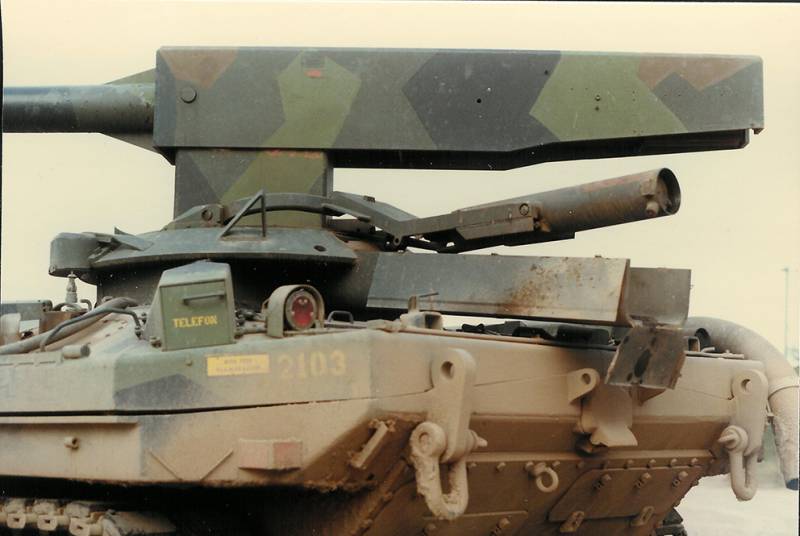
Information